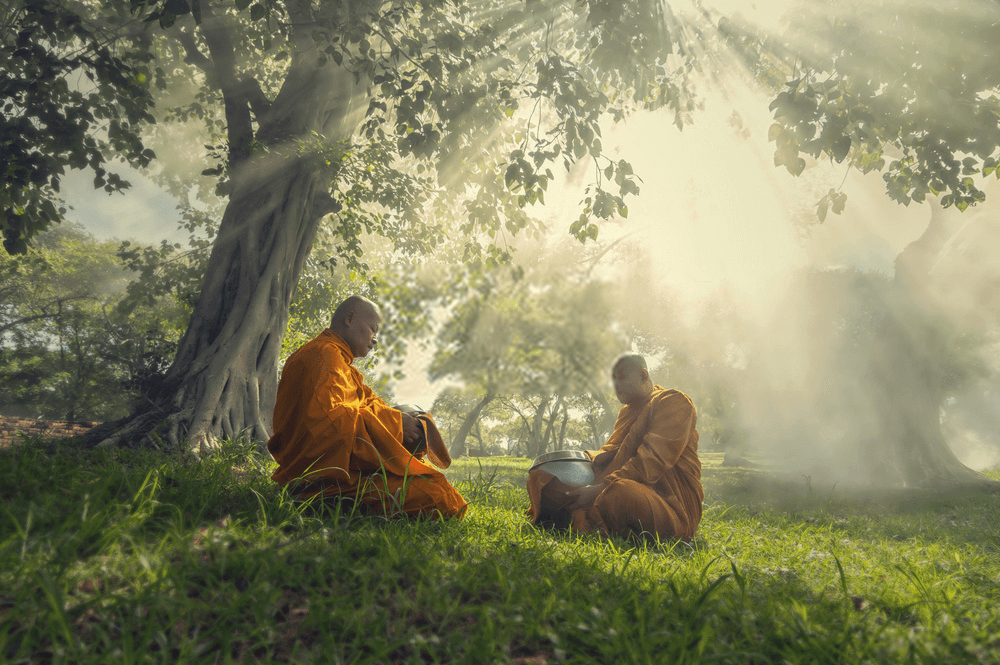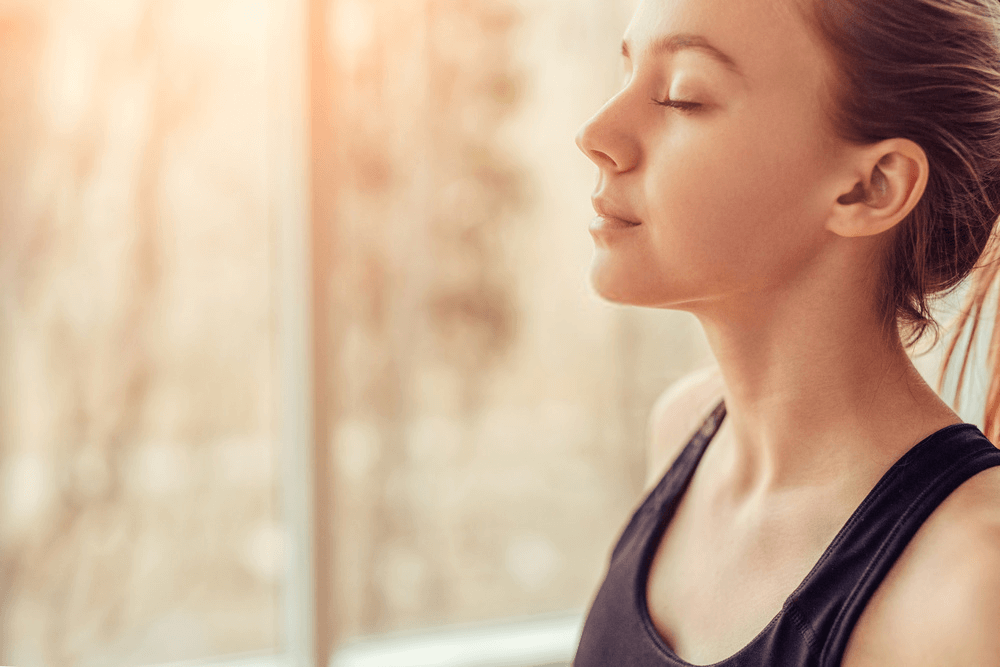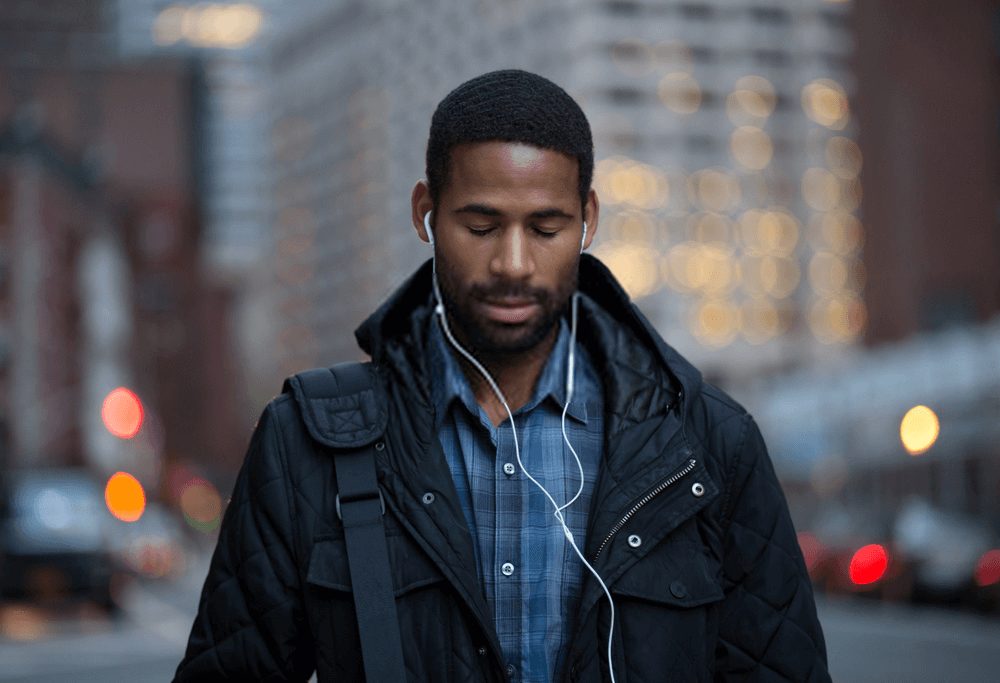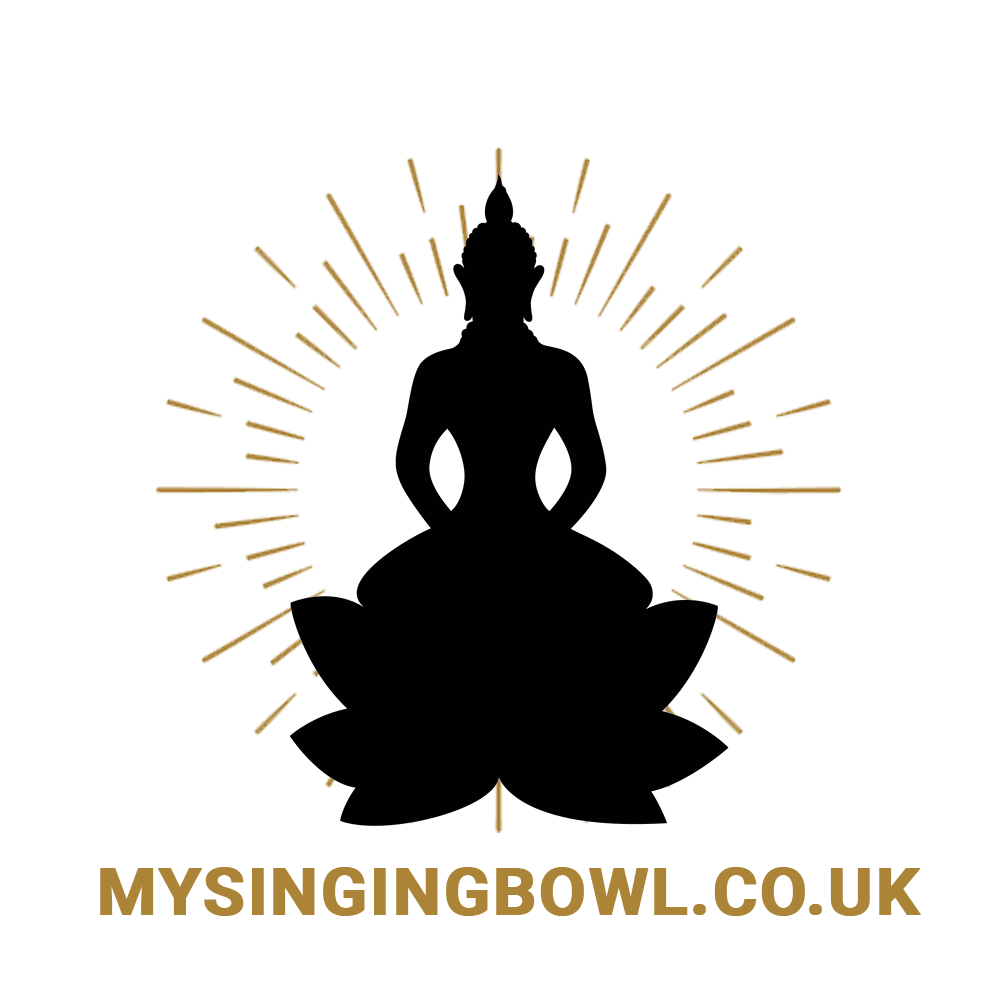Meditation
Discover 3 quick and easy meditation methods
The effects of meditation on our bodies and our minds don’t have to be proven. Studies that highlight the advantages of this practice are ever-present on the internet and in literature in general. If Yoga or Pilates classes today are increasing in popularity it is for a reason. In recent years there has been a real desire for people to look after themselves on a spiritual and psychological level. Meditation is therefore a logical response to this common will and can be practised in various forms, you may even already be an enthusiast without realising it! Whether you are a beginner who is curious about the benefits of this type of practice, or even an expert for whom meditation holds no secrets, you will most certainly find some advice in this article that you will be able to easily apply in your everyday life.
The origins of meditation

Before going into the details a little more, a brief summary on this ancient practice is required. It might seem difficult or even impossible to sum up more than 3000 years of practice in only a few sentences. So I’m going to try and treat the subject and be as clear as possible.
The effects of meditation on our bodies have only been seriously studied since the 1960s but this art has been practised for more than 3000 years. The first traces of this practice have been found in mural paintings in India where people were depicted adopting positions linked to meditation, such as the Lotus position for example.
A popular misconception is that Buddha in person is at the origin of meditation. In actual fact, meditation is THE cornerstone of Buddhism that would allow followers to reach “Nirvana” (the state of absolute awakening). However, looking at the history of Buddha in a little more detail, we see that he received his teaching from two Indian masters who taught him meditation during his childhood.
In the past, and especially in this part of the world, the spiritual side was paramount and it was believed that one could access absolute knowledge through certain psychosomatic disciplines such as meditation.
The term “psychosomatic” comes from ancient Greek: Psyche (Spirit) and Soma (body). Simply put, these are the beliefs according to which the soul and the body are closely linked. This discipline can be found particularly in Chinese, Greek, Egyptian, Jewish and Arabic medicines or even in the writings of the greatest Greek philosophers.
Science, religion and philosophy were once closely linked and inseparable from one another and meditation was often the link between these 3 disciplines.
Nowadays, the evolution of our society and our morals have drastically changed how we think and meditation is for most just a fad that would make it possible to “find oneself”, or simply a way to regain one’s calm and increase concentration. However, the benefits of meditation cannot just be summed up like this and you will find that meditation has countless benefits.
The advantages of meditation

Science and meditation are for many quite separate disciplines, however scientific studies agree that meditation brings important benefits to our body and above all to our brains. It has thus been shown that in people who regularly meditate the loss of age attributed brain power is strongly reduced.
In actual fact meditation effectively and intensely stimulates our brains and this is notably the case for the areas responsible for perception, attention, memory or even stress.
We also know that the brain is the centre of our bodies and of our entire being. It is this organ that defines us both physically and mentally. Thus developing and maintaining it as is the case with meditation allows us to logically improve our overall health.
From a psychological point of view, we already know that meditation has a positive impact on sleep and on physical performance but its benefits are not limited to these aspects alone. Meditation also allows you to:
- Prevent certain cardio-vascular illnesses
- Regulate blood pressure
- Reduce certain chronic pain
- Improve the health of people with depression
- Improve immune system performance
- Significantly reduce stress
All of its benefits have been supported by a large number of studies however some points are still too difficult to measure from a scientific point of view. This is notably the case of spiritual and psychic benefits that the practice of meditation can bring us. Among the most cited benefits by regular practitioners are:
- An increase in creativity
- An improvement of concentration
- An improvement of memory
- Increased self-confidence
- A calming of negative thoughts
- An ability to combat addiction
Of course other benefits are brought on by meditation and an entire article should be devoted to them. The goal of this article is not to precisely detail all of the advantages that meditation can bring you but to briefly look at what benefits you can get out of it personally. It is with this in mind that I’m going to present five quick and easy meditation methods for wherever you are.
Basic meditation based on breathing

Most meditation enthusiasts started with this method and still use it. This method immediately comes to mind when we talk about meditation in general. It is also this method which suits beginners the best because when it is correctly practised we can immediately see its effects.
This meditation is also recommended when you are going through a particularly difficult phase. Calming your mind and focusing on something else at a steady pace helps ease tension and reduces stress on your mind and body.
Time required:
For this type of meditation 10 to 15 minutes will suffice. You can practice this kind of meditation when you wake up, your mind will be completely awakened and you won’t have to worry about falling back asleep. This method is ideal to start your day on the right foot.
How do I start?
As the name suggests, this type of meditation requires you pay particular attention to your breathing. You can be seated or lying down- the most important point is that you are perfectly at ease. If lying down immediately sends you to sleep, a seated position would be better.
Meditation should be practised whilst completely awake– you should be totally conscious of your surroundings and your attention and senses have to be sharpened. You can keep your eyes open or close them, it doesn’t matter, and adopt a position that seems most comfortable for you.
Once you have found a comfortable position, you can start your meditation. To do so try to regulate your breathing to a regular rhythm. Breathe in deeply through your nose for 3 seconds, hold your breath for 1 to 2 seconds, then breath out through your mouth for 4 seconds. You can also regulate your breathing with the following image:
If you feel your mind starting to wander, immediately refocus on your breathing. Rest assured this is not abnormal and on the contrary, this proves that you are comfortable and that your mind is starting to explore other horizons. However it is essential when meditating to keep your attention on your respiratory rhythm.
Keep this state of concentration for 5 to 10 minutes, feeling your whole body relaxing and in harmony with your environment. Feel your breath, which originates in the deepest part of your chest and then travels throughout your entire body to be gently expelled through your mouth. Your mind will wander several times during this phase but be sure to redirect your attention to your breath every time.
Once time is up, let your whole body drop one last time. Enjoy this peaceful state and gently let your mind float. Enjoy these few moments whilst you can and then “come back to earth”. Slowly regain awareness of your environment and visualise your day. Visualise the tasks that you have to accomplish today and how you are going to get them done.
You can then regain your full attention and be proud of what you have achieved. It is now time to start your day.
Mindfulness meditation

Have you ever been in the middle of doing something automatically and you forget what you are doing for a second? This type of phenomenon is what we call active meditation or mindfulness meditation.
For me, this type of thing happens very often when I am behind the wheel of my car. We could believe that we become less attentive to what is around us but on the contrary, we are more alert and more conscious of our environment.
Time required:
Mindfulness meditation can be practised anywhere and at various times. You can meditate for 5 minutes but it can feel like 45! It all depends on the context, your wants and needs.
How do I start?
Mindfulness meditation is relatively similar to breathing based meditation. You could say that it’s just the level above.
The more you practice this type of meditation, the quicker you will be able to reach this relaxation phase. It’s like this for everything, the more we practice, the more we become accustomed and the easier it is to find. You will be able to reach phases of relaxation without focusing on your breathing because your body automatically knows the path it needs to take.
It is extremely difficult to explain how to start practising mindful meditation because it is with practice and knowledge of one’s body that one does it best.
It’s like trying to explain how to ride a bike without stabilisers to a child. Balance as well as meditation are relative to everyone involved, you can’t tell your child:
“Just try not to fall.”
Indeed, they have to first experience this for themselves, to realise how their bodies move in the space and naturally find the points that will allow them to find their balance. Once you’ve learned how to keep your balance, it’s hard to explain with words to convey your knowledge, but one thing is sure and that is that your body will know how to reproduce this balance position every time, now matter how long you go without riding a bike.
Mindful meditation is a bit the same. When your body has automatisms, it naturally knows how to reach states of relaxation that you impose on it with meditation. Whether it’s driving, brushing your teeth or doing something that you’re naturally used to doing, your mind will split off, allowing you to relax whilst remaining perfectly alert.
Attention- in this case I’m not speaking about a loss of attention or even a state close to sleep. Effectively this kind of attitude would be extremely dangerous behind the wheel of your car for example.
Here are some tips that will allow you to practice this kind of situation depending on the situations you find yourself in.
Doing the dishes
Don’t do the dishes if you have it in your mind that you’re going to sit on the sofa in front of the TV right after. On the contrary, enjoy this special moment with yourself to put this time to use. Feel the water running over your hands and concentrate on your movements, live in the moment and clear your mind of unnecessary things. Explained in this way, I grant you, it might seem absurd but this is also mindful meditation. Rest your mind by letting your body go whilst focusing on the present moment.
Brushing your teeth
Brushing our teeth is something we do everyday. Our body has perfected this action and our mind is more inclined to develop during this time. As you brush your teeth, feel the brush’s movement on your teeth and feel your feet anchored to the floor. Have you ever noticed that whilst brushing your teeth or in the shower we always get our best ideas and our brains function best? This is quite simply because unconsciously your mind is awake and you are perceptive to more. You are confident and relaxed, your body no longer becomes a machine that you need to control but more an ally that allows you to let your mind concentrate 100%.
Whilst exercising

Scientific studies are upfront, exercising just to exercise is not ideal for our bodies. The effects of sport are 100% felt when a brain-muscle connection is made. You have to be aware of all parts of your body. Whether you feel that the exercise you’re doing has such and such effect on your muscles.
Some sports coaches call this common sense but it isn’t always easy to establish this link especially when we are beginners. This type of practice is conscious meditation, in fact it is simply a matter of sharpening their senses to become fully aware of our body, of its position in the space is the result of your movements on your body.
When you know how to fully control this state, your mind will automatically be soothed as soon as you begin your physical activity. Coupled with the endorphins your body produces during exercise, you will be all the more rewarded and proud.
During an artistic activity
Whether you are a drawing enthusiast, a reading fanatic or writing is an effective outlet for you, you have surely already practised mindful meditation. When your body and your mind engage in certain activities that make you happy or that you’re passionate about, sometimes your body goes into “autopilot.” You become fully aware of your environment, your body and mind split and you become more conscious and productive than ever.
To be able to work on this aspect, firstly we have to know ourselves, know what we are truly passionate about and apply ourselves and persevere in this area. Once you know the activity that suits you best, I recommend that you take yourself away to a quiet room and settle in the most comfortable way possible. Concentrate your whole mind and thoughts on your activity. Leave your everyday problems at the door- you can pick them up again later! Concentrate on the present moment, on your pen moving over the paper or on the sound of the keyboard keys that your fingers tap in a regular and almost hypnotising way. You will find that your problems have eased when you return to everyday life.
Guided meditation

When we talk about guided meditation, we aren’t necessarily talking about meditation accompanied by a teacher. I grant you, there are many benefits to having a teacher and giving us a competent guide who knows and who is used to guiding beginners during meditation sessions.
The lightning rise of the popularity of meditation in recent decades has allowed us to develop methods that allow us to optimise or at least accompany our daily sessions. Whether that be with the help of a book, a video or even music, the support available today is as numerous as they are varied.
Time required:
Once again, it is difficult to say how long is needed to practice this sort of meditation. It all depends on the support you are using, its format but also the time that you have at your disposal. It is not always easy finding some free time during the day. Nevertheless meditating for just 5 minutes is infinitely better than not meditating at all. It is important to grant time for yourself and it may even save you precious time in the future. You never regret devoting yourself to meditation. Wise words!
How do I practice?
It all depends on your preferences, you have several outlets at your disposal and each has their own advantages and disadvantages.
Podcasts
Podcasts are surely the most practical format that exists, you can take them with you anywhere throughout the day and you can listen to them whenever and wherever. On public transport, during your lunch hour or even on your Sunday jog. You just need your phone and a set of headphones. Carefully select the podcasts you will listen to, but be careful, and keep in mind that most are available for free. Don’t be fooled by dream salesmen offering expensive audio files.
Videos
There is nothing like relaxing in front of a screen at the end of a day. Slumping into your armchair and feeling like you’ve completed your day is a feeling like no other. However, why not take advantage of this habit to add to your own life? Many experts now offer free videos which can accompany you during your meditation sessions. It is very easy to find videos on YouTube and I can only suggest that you follow some of their advice. Again, pay attention. Find out more about the video creator and the content they offer. Some channels are only a front to offer unaffordable products.
Music and sounds in general
Music and sounds in general are often an excellent aid during meditation sessions. So of course, I can’t not mention Tibetan bowls and crystal bowls when we are looking at this subject, but these instruments act as a real guide and allow you to concentrate on yourself in the most effective way.
Like the steady, soothing sound of rain, Tibetan bowls allow your mind to channel itself, erase the problems bothering you and focus on a single precise point. Your mind and your entire body will just be guided by these sounds and your meditation session will be pushed to a whole new level. These instruments are found in the homes of a large number of professionals for a reason. Also, it is now possible to buy this kind of product for a very reasonable price, so why not try it out?
In conclusion
Meditation is a personal experience that concerns only you and your mind. Practised regularly, it allows you to enjoy many benefits both on the spiritual and physical plane. It is not always clear how to get started in this domain, to find your bearings. Meditation methods are as varied as the people who practice them and I hope that in this article I have been able to give you some small tips that will be useful to you in your personal meditation sessions.
On your marks, get set, MEDITATE!


Hello,
Thank you for this very interesting article.
If I can help a lot of people who want to relax their body, mind, tension and muscle inflammation.
The solution to the problem is simple, it’s reflexology.
I followed a complete training online course because I knew absolutely nothing about it, from the first sessions I got good results.
It’s amazing how quickly reflexology acts on the organs, muscles and in our brain.
Thank you for your great site! 🙂